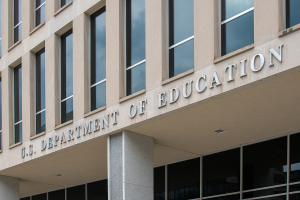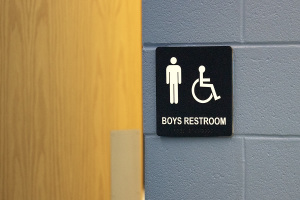Obama Announces Plan to Ease Student Debt
President Obama announced plans on Wednesday to provide relief to millions of people entrenched in student debt. Obama’s plan, however, involves using his executive authority to bypass a Congress that the president says simply acts too slow.
The president’s new offensive play is titled “We Can’t Wait” and he’s urging lawmakers to act more quickly to solve the economic problem. Obama announced his plan to ease student’s repayment of federal loans in Denver, Colo. The plan comes at a time when many American families are struggling with a rising college tuition rate.
"These changes will make a difference for millions of Americans," Obama told a college crowd, according to CNN. "We should be doing everything we can to put a college education within the reach of every American."
“What we’re trying to do is help on the back end, to reduce those monthly payments on those loans,” U.S. Secretary of Education Arne Duncan said Wednesday on MSNBC’s “Morning Joe.”
“To make sure folks have a better opportunity to be successful there – less defaults will strengthen the economy, and we can do this by ourselves. We don’t have to wait for Congress – we can’t wait for Congress. We’re moving ahead today.”
The plan has three main components:
-It will allow for borrowers with more than one government loan to consolidate their balances. The White House has said that it will effectively cut interest rate on student loans by 0.5 percent
-It will limit the amount of student loan payments to 10 percent of a graduate's income. Right now, the limit is 15 percent
-The current student loan forgiveness takes place after 25 years. Obama’s plan will shorten that time frame to 20 years.
According to The Washington Post, approximately 7.4 million student borrowers would be affected by the president’s plan. Outside of mortgages, student loans are the number one source of household debt, the White House has declared. Student loans come in at approximately $1 trillion, exceeding U.S. credit-card debt.
A College Board study was released this week revealing that in-state tuition and fees at public four-year universities for the 2011 school year is 8.3 percent higher than in 2010.
“These are good ideas. It’s a big deal that the president is recognizing the burden that student loans have on American families,” Julie Margetta Morgan, policy analyst for Center for American Progress, told The Christian Post. “This is issue is at the top of the list of frustrations expressed by the 99 percent. He’s seeking through executive action because he knows Congress won’t do anything about this.”
“We are talking about helping out people who have historically been shortchanged. Young people are coming out into a depressed economy. There aren’t many jobs available. They were promised that when they went to college, they’d have a job upon graduation. They’re finding out now that may not be the case,” she noted.
“This relief would let them buy necessities like food. The administration is just trying to give them relief.”
Not everyone thinks the president’s plan will have a positive effect. Many Republicans have spoken out in opposition to Democrats’ previous plans to quell private student-loan companies, which was included in a stipulation in last year’s health care overhaul that stopped subsidizing them.
Top Republican officials have yet to speak out about Obama’s specific student loan plan.
Lindsey Burke, senior policy analyst at Heritage Foundation, expressed her opposition to the plan, calling it unfair.
“This administration is taking money from the working class to finance the degree of college students who took out a larger loan than they could afford for a college degree of question. They are shifting the burden from the student to the [75 percent] of Americans who did not graduate from college. This is unfair,” she said.
“Federal subsidies is not the answer. Reducing or forgiving debt leads to increase in college cost. Federal subsidies in general create a vicious cycle of lending. When the federal government increases student subsidies, students have a false sense of buying power. This enables universities to increase tuition rates.”
According to Burke, college tuition has increased by 439 percent since 1982.
“That is faster than increases in health care,” she noted. “Pell grants have also increased by 475 percent. Therefore we have seen federal grants increase at a commensurate rate as the tuition hikes. And it hasn’t helped.”
Burke suggested that the administration limit the number of years a student is eligible for federal subsidies.
“Federal subsidies insulate colleges from being worried about spending money wisely. Therefore, we have seen an explosion in tuition,” she said.
“Also, attaching merit to federal subsidies would help. We need to require students to do well. Finally, encouraging states to put more course content online would drastically reduce tuition cost and help pop the higher education bubble.”
Under Obama’s proposals, these new changes will go into effect next year.





























